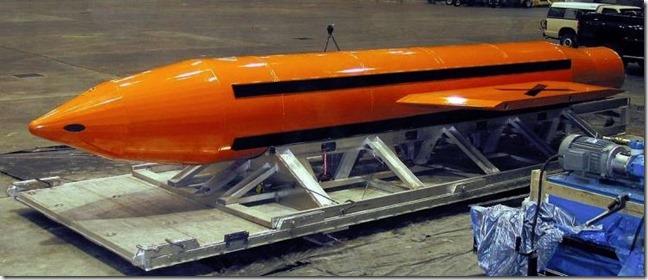Captain Rick: I introduce Denis Egan as a guest journalist on Atridim News Journal who will present amazing testimony about Islamism based on his long history of experience in Afghanistan, Iran, Lebanon, and Saudi Arabia as an instructor of English to Muslims.

Denis Egan
Denis Egan, born and raised in the Chicago area, found his world perspective and values turned upside-down when a service in Peace Corps in Afghanistan in 1965 led to a career as an educator in Middle Eastern, Near Eastern and American institutions. Although he was generally well-treated and respected in Afghanistan, Iran, Lebanon and Saudi Arabia, he found himself fleeing from his office in the American University in Beirut in a demonstration in 1974, prior to the start of the civil war in Lebanon.
His 17- year work history in the Middle East includes institutions in Herat and Kabul, Afghanistan, the University of Mashhad, Iran, the American University of Beirut Lebanon, King Fahd University of Petroleum and Minerals in Dhahran, Saudi Arabia and the Iran America Society of Isfahan, Iran.
In December of 1978, he fled his position as Director of the Iran America Society in Isfahan, Iran, shortly before the departure of the Shah and triumphant return of Khomeini as head of the Islamic Revolution. And after the attacks on America of 9/11/2001 in which 15 of the 19 attackers were Saudis, he resigned from the University of Petroleum and Minerals in Dhahran, Saudi Arabia and returned home to the U.S. He now writes and gives presentations about his experiences, the modern history of the area and its future.
Denis Egan
Denis Egan expounds with details of his career
The Middle East Then and Now
“Get to a T.V. They’re attacking New York and Washington.” On September 11, 2001, my wife was warning me by phone from our campus housing at the university in Dhahran Saudi Arabia that America was under attack and possibly by Saudi terrorists. “What are you talking about? Nobody attacks America”, I replied. I rushed down the hall to the office of our Saudi Dean of the English language center.
I saw horror on his face as he waved me inside. He was a tall man in the stylish “agal” head covering and long white “thobe” covering his slightly bulging body. He was a graduate of Georgetown University with a Ph.D. in linguistics. He was not cheering like some crowds in certain areas of the Middle East. His personal world based in the University of Petroleum and Minerals might soon be crashing down just like New York was before our very eyes. I would soon resign my position there but our exit wouldn’t be easy since I had just signed another 2-year contract with the institution.
Would this be the end of much of my life’s work based in the Middle East? It had all begun as a Peace Corps Volunteer in Afghanistan in 1965. Was it to end here in 2001?
Where Am I?
Waking up in a strange place can produce a frightening confusion for a short time while your memory pieces together where you are and how and why you’re there. So it was in May of 1965 when I awoke in a very strange hotel room with an uncomfortable bed, thick walls with a blue-gray, wash-type paint, a chair and small table, very old but not quite antique. It was 2:45 a.m. on the other side of the Earth from my home in the Chicago area from which I had rarely traveled far. It was certainly more than a minute, maybe more than two, when my growing panic subsided with the realization that the strange city outside my window was Tehran, Iran, the first stop on my itinerary to Afghanistan as a member of a Peace Corps group of teachers.
Kabul, Afghanistan, 1965
The same feeling came over me the next morning at 4:00 a.m. but quickly passed as a cacophony of cattle bells called me to my window in the Kabul Hotel to review a long camel caravan passing before me on the, otherwise deserted, pre-dawn street in the capital of Afghanistan.
At my teaching assignment in Herat, I was soon introduced to the gatherings called “conferences” which happened about 3 times annually. The first event would be speeches by visiting dignitaries from Kabul, followed by recitations of much-loved Persian poetry. And finally a local band would conclude with favorite songs. By the 2nd or 3rd conference, I was invited to be the lead singer with the band.
“Mr. Egan, we are politely requesting that you sing a song for us”. The band leader was requesting, in the elaborately polite Farsi dialect of the area, that I join them. I sang free of the self-conscious inhibitions that constrain people when they’re performing in their own culture, before family and friends. The audience called out for “Cheshma Seeaw Doreen” (You Have Dark Eyes). It was a very popular song which I knew well.
Music, songs and poetry seemed to be the acceptable outlet and remedy for religiously loyal Afghans who prayed 5 times daily and had strict separation of the sexes. The next request had a very common theme in highly-melancholic, Afghan songs, i.e. unrequited, one-sided love. It was the crowd’s favorite. I would be invited to sing it at many parties and weddings thereafter. When one considers their religious dedication to God (Khodaw in Farsi, Allah in Arabic) and the hard lives of the Afghan people, the whole history of that nation seems to have the same theme of love unrequited by Khodaw, the theme of Afghanistan.
These were beautiful days in the 60’s in Herat, years of peace and happiness in a basically poor but busy and hopeful community. Who could have dreamed in the “conference” on that beautiful October day that the modest mixing of young men and women, celebrating educational strides, literary tradition and the music and songs of Herat, that all of this would be forbidden and considered evil, against God’s will? But this was one typical day in Herat in the 60’s, a time when music was the anti-dote to the many daily problems of life.
In my final flight departing Herat, a sad feeling came over me. The words of the New England poet Robert Frost came to mind about his choice in life, the road less traveled by, wherein he wrote the following: ”And both that morning equally lay in leaves no step had trodden black. Oh I saved the first for another day yet knowing how way leads on to way, I doubted that I should ever be back.” Was that it for Herat? Would I never be back again? Would I never see these friends and places again? I assumed not. But I was mistaken.
Iran, 1969
The bus was filled with a wide assortment of travelers foreign and native. Among the foreigners, besides us, were a couple of hippies from America from who, in addition to other smells, emanated an odor of marijuana and hashish. Two local farmers in baggy pantaloons and long shirts boarded with 4 wives and some equally noisy chickens. Their turbans resembled those of Afghans, swirling ‘round and ‘round the head with one end hanging down below the waist. They were headed for an Iranian village along the way which was an important center for Turkoman tribal people.
The 200 mile trip from Mashhad Iran to Herat Afghanistan would take a full day, due mainly to the delay at the Afghan border where all our passports had to be stamped by a one-eyed official using a kerosene lantern in a dark, thick-walled, brick hut in the border outpost of Islam Qala. To speed up the process our driver would collect a cash “bakhshish” (donation) from each of us to present to the official in a less than obvious manner. Our driver would, of course, retain his 50% commission of the bakhshish. We arrived in Herat at dusk and registered into the relatively new Russian-built hotel
Lebanon, 1972-1974
“You ought to have an advanced degree in the subject you are so involved in, English as a second language education. We would be happy to have you teaching in our American University of Beirut (AUB) language program while you complete your MA degree”. It was early 1972 and I was in Kabul Afghanistan in the middle of training another group of Peace Corps English teachers. A British professor from AUB was making sense with his offer to start in his program in Beirut in the coming June. So in early summer I began life and work in the “Paris of the Middle East”, Beirut. This would be my first introduction to Arab cultures. It would be my first experience with civil strife turning into civil war.
Saudi Arabia, 1974-1976
With an MA degree in English Education in the summer of ’74, I was faced with an offer to join the University of Petroleum and Minerals in Dhahran Saudi Arabia at a significant increase in pay level but with a life in a very conservative Islamic nation. Leaving the multi-cultural, sophisticated civility of Beirut would have been difficult if it hadn’t been for the lack of civility of students with large rocks entering my office and stoning the well-armed, red-beret, Lebanese security officers down below, resulting in my jog to safety through exploding tear gas bombs.
Iran, 1976-the Islamic Revolution
“Kareem, where are you going? Watch out.” It was too late. My driver from the Iran America Society must have been day-dreaming as the highway divided with a garden-median and Kareem, for some reason, chose to enter the left lane. The highway wasn’t crowded but a startled, on-coming driver veered sharply to his right and began to lose control as he passed us. Kareem quickly got us back on to the right side of the median. As I looked back the other car was swerving and slowing then finally turning over on one side. The driver emerged and looked unhurt but very angry. “Should we go back?” Kareem asked. We were just a few minutes from the Isfahan airport and I answered “You’ve got to drop me at the airport first”. I had to be exiting Tehran and the Islamic Revolution early on the following day.
Saudi Arabia, 1982-‘86
Getting on the bus from Dhahran to Al-Khobar, Saudi Arabia at the women’s entrance at the rear was humiliating enough for my wife. To then be confronted with metal prison bars separating her from the men’s front area required a response. “Gurrrr, Woof, Woof, Gurrr,” she snarled with her faced pressed up against the bars. The Saudi men in red and white “gutras” over their heads and full-length white “thobes” turned in amazement and disgust. “Sigrid, cut it out. They’ll throw me in jail,” I warned her. Having led a life of extreme independence in her home in Germany, in France, Switzerland and finally in the U.S., my wife was not handling the local, ingrained discrimination-against-women very well. In a country where women weren’t allowed to vote or even drive a car, Sigrid was a fish out of water.
Saudi Arabia, 1999-9/11/2001
As mentioned above, the attacks on America of 9/11/2001 made me wonder “would this be the end of much of my life’s work based in the Middle East since 1965?” My Dean of the English Program at the University of Petroleum and Minerals was standing before the TV in shock when I entered his office.
I saw horror on his face as he waved me inside. He was a tall man in the stylish “agal” head covering and long white “thobe” covering his slightly bulging body. He was a graduate of Georgetown University with a Ph.D. in linguistics. He was not cheering like some crowds in certain areas of the Middle East. His personal world might soon be crashing down just like New York was before our very eyes. I would soon resign my position there but our exit wouldn’t be easy.
The View from Home, 2002-2011
How could I forget the Middle East, the life, and the friends before the music died? Certainly the Iranian and Afghan friends in America, whether new or old acquaintances, have adapted to their new country as quickly as any previous immigrant group. They have been mixing into American society in every profession. The same can be said for the Arab immigrant groups I’ve come to know. However, I began to become aware of some Islamist-based intrusions into governmental power and societal influence which I had noted in recent decades in the Middle East as a destructive force.
Denis Egan
Stay tuned to Atridim News Journal for amazing reports from Denis Egan coming soon.
Click the button to ‘Follow’ ANJ and/or the button to have WordPress email you with new ANJ posts.























